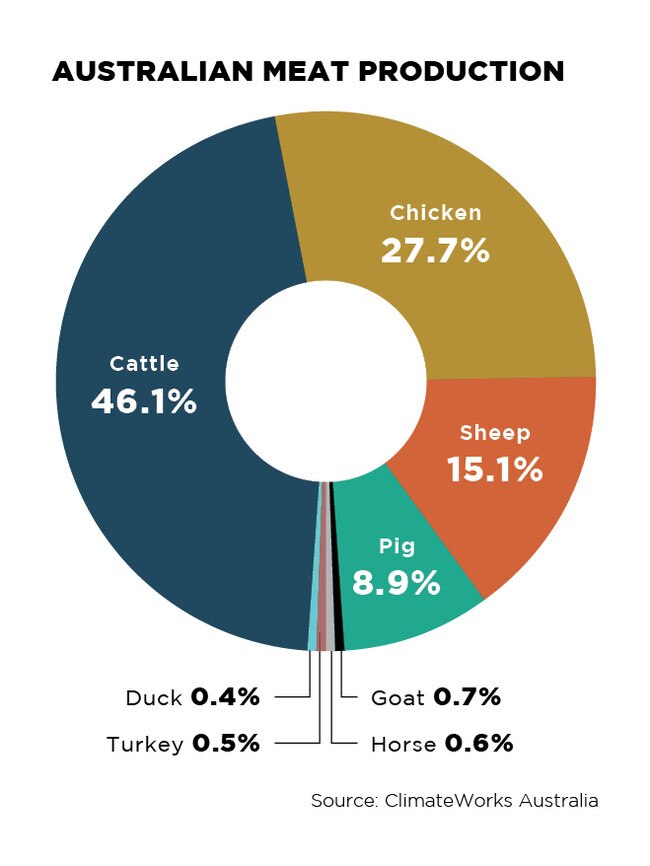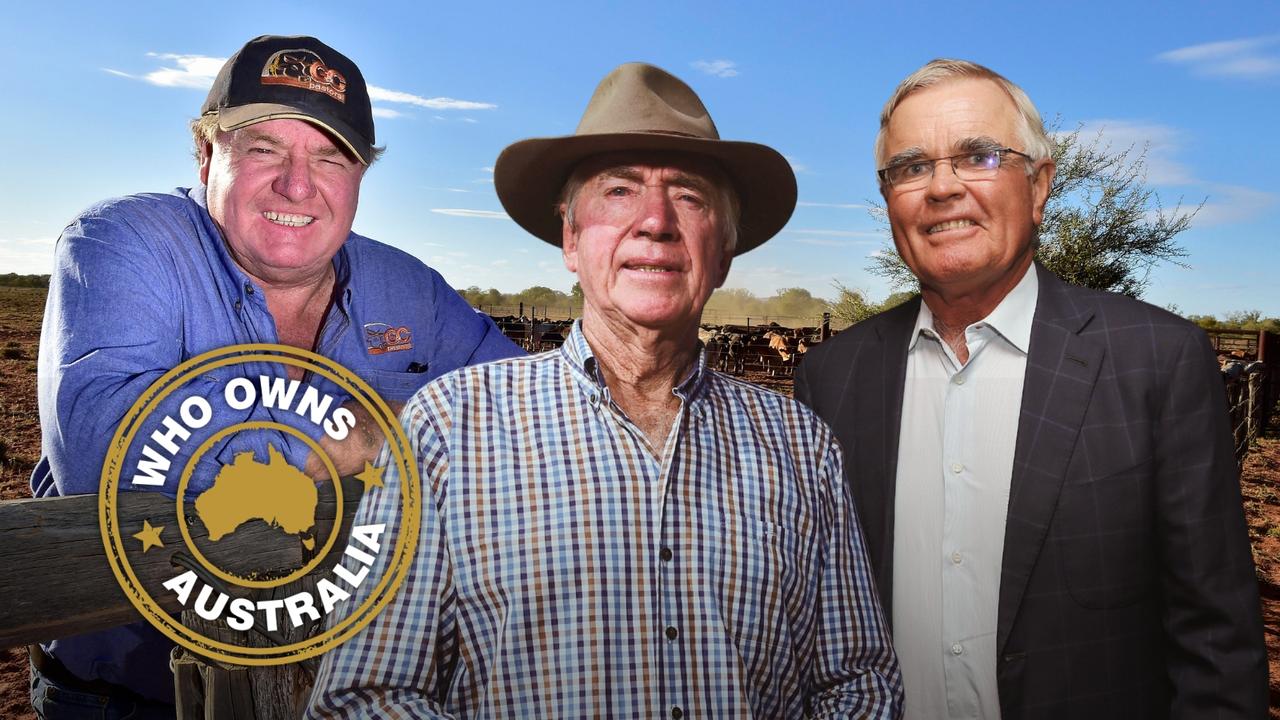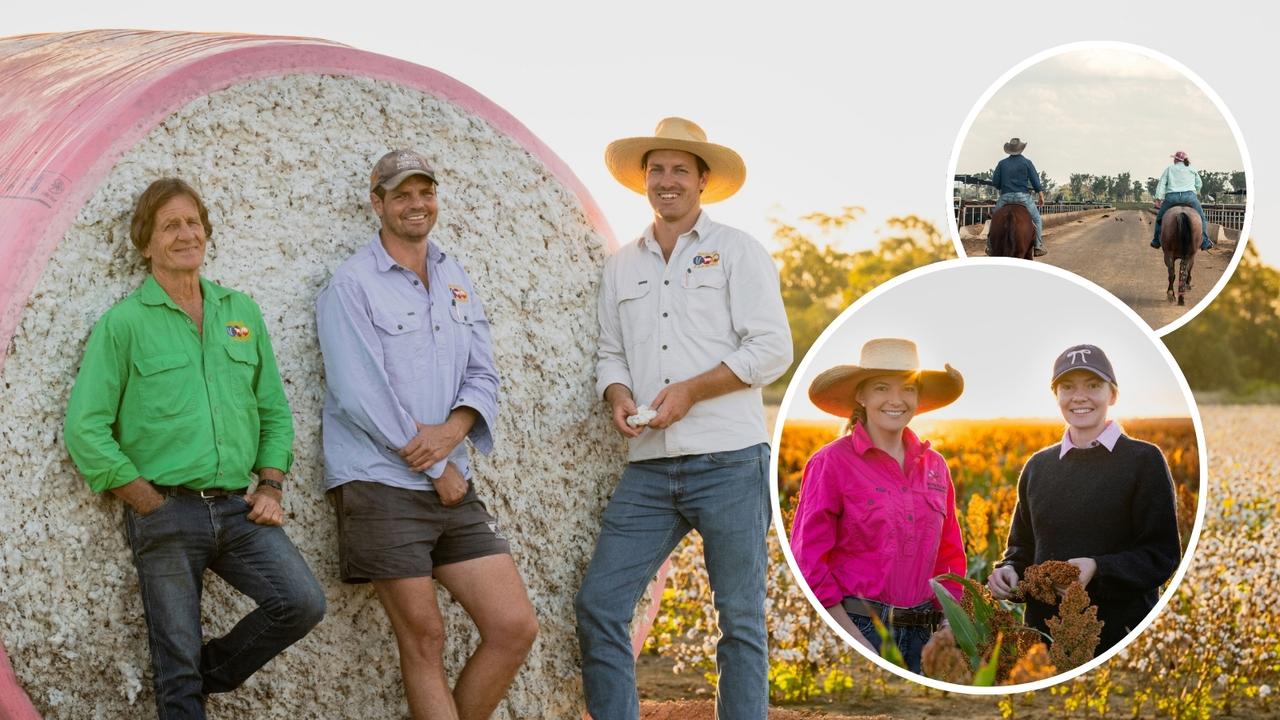Agriculture dominates Australia’s land use, virtual pie chart reveals
Agriculture dominates Australia’s land use, new maps published in Australia’s agribusiness magazine AgJournal reveal.
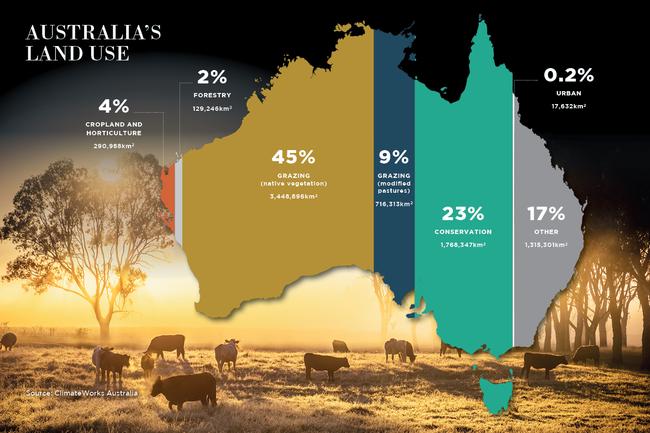
WHEN you consider most Australians live in coastal cities, you can be forgiven for forgetting the wide, open landscape that lies beyond the city skyline.
Yet it’s impossible to deny the stronghold farming has on Australia when you look at this map produced by ClimateWorks Australia.
It reveals a whopping 58 per cent of Australia is devoted to farming.
Never before have we seen agriculture’s footprint presented in such a way, using Australia as a virtual pie chart.
By far the greatest use of Australia’s land is grazing, with only a small portion — seen in the red on the far left of the map — used for crops and horticulture.
Within that red portion, what the map doesn’t show, is the 1 per cent of farmland that is irrigated, which accounts for almost a third of the value of Australia’s agriculture output.
It’s amazing just how much dairy, fruit and vegetables Australia produces each year off just 44,561 square kilometres.
And while farming takes up more than half the land in Australia, it accounts for just 3 per cent of the nation’s economic output.
The starkest contrast on the map is that 58 per cent of the landmass is feeding a population residing on just 0.2 per cent of the land. And, of course, exporting worldwide.
MORE AGJOURNAL:
HOW AG WILL MEET ITS 2030 VISION
RUGBY FARM ONE OF AUSTRALIA’S BIGGEST VEGETABLE-GROWING OPERATIONS
FARMERS TURN FOOD WASTE INTO OPPORTUNITY
ClimateWorks program manager Eli Court says the report illustrates how dominant farming is across the Australian landscape. “It’s fantastic to see the Australian landscape visualised in such an easy way,” Court says.
Australian Farm Institute executive director Richard Heath says the figures will “make a lot of people understand more in depth how agriculture relates to the country overall”.
The numbers, Heath says, show Australia’s might as an agricultural exporter, with about 65 per cent of all produce being exported each year.
“Australia is a minor producer, but a major exporter,” he says. “Our production of, say, wheat, or beef, we are well down the scale in terms of the total production, but because we have a small domestic population, we export quite a lot of it.
“As an exporter, we’re really quite significant.”
ClimateWorks’ Eli Court says a huge proportion of the landscape is not really suited for agricultural use.
“It’s not suited much for human use, although indigenous communities have been using that land for generations,” he says. “The modern Australian economy doesn’t see much use for Australian land, other than livestock.”
The vegetables we serve at dinner time, the avocado smeared on toast and the wheat used for the bread is all grown on just 4 per cent of total agricultural land, with irrigated agriculture a quarter of this.
“Cropland and horticulture is so small, but in particular with irrigated agriculture it’s a very significant sector,” Court says.
“It takes up a tiny proportion of land, and I think that’s quite interesting. There’s a lot of land dedicated to raising livestock, a smaller part to commodity crops like wheat, barley, and canola, and a tiny amount to the fruit and vegetables that we’re saying we need to eat more of.”
The maps also reveal Australia has a unique mixture of land ownership. Almost half of the country is leasehold land, with vast swathes of that leasehold country government-owned under long-term lease to farmers grazing cattle and sheep.
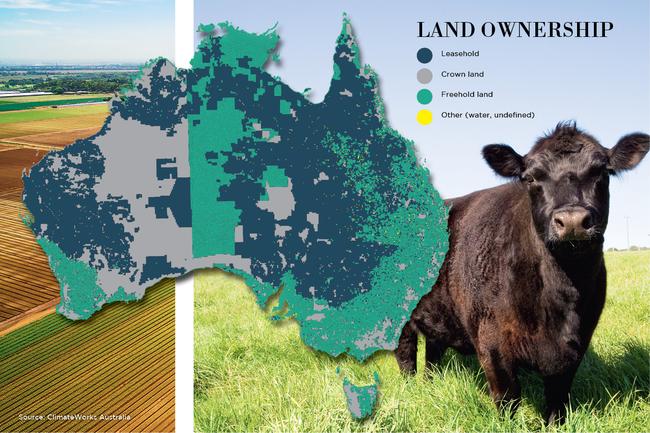
Crown land accounts for 24 per cent of the land mass, and about 28 per cent of Australia is freehold land.
The recently published Rabobank Australian Agricultural Land Price Outlook shows there is strong demand for agricultural land in Australia.
Only 13 per cent of Australian agricultural land by area has some level of foreign ownership interest. When assessed by value, that figure drops to just 7 per cent.
Rabobank agricultural analyst Wes Lefroy says most foreign interest in Australian agricultural land can be found in the livestock sector.
“Pastoral grazing land is, however, of less value compared with other production types such as cropping and horticulture,” Lefroy says. “Foreign and corporate investment, rather than family farms, have tended to be more focused on horticulture production, underpinned by positive outlook in permanent crops and the scale and high capital costs involved in some of the new developments.”
The ClimateWorks study shows Australian meat production is divided into 46.1 per cent cattle, chicken 27.7 per cent, sheep 15.1 per cent, pig 8.9 per cent, goat 0.7, horse 0.6, turkey 0.5 per cent, and duck 0.4 per cent.
Of the 4 per cent of land dedicated to crops, cereals take the largest slice, at 2.74 per cent, followed by 0.3 per cent for legumes, oilseeds 0.29 per cent, cotton 0.08 per cent, sugar cane 0.07 per cent, and fruit and nuts 0.05 per cent.
